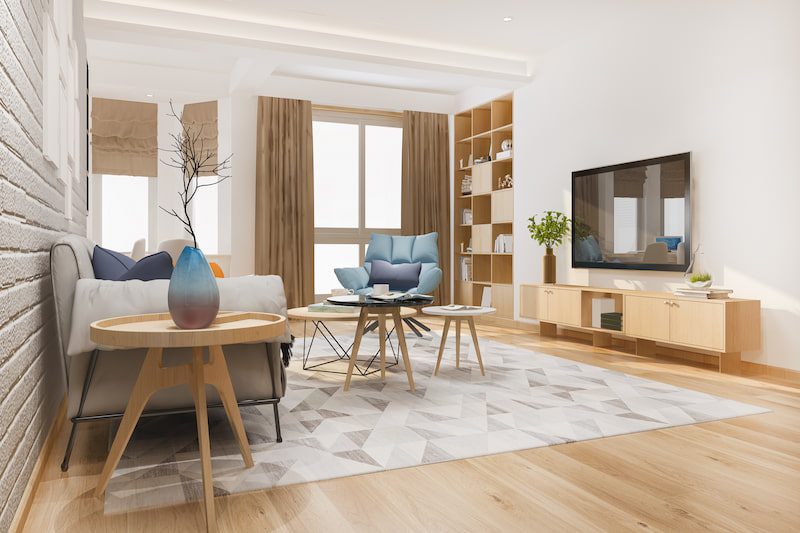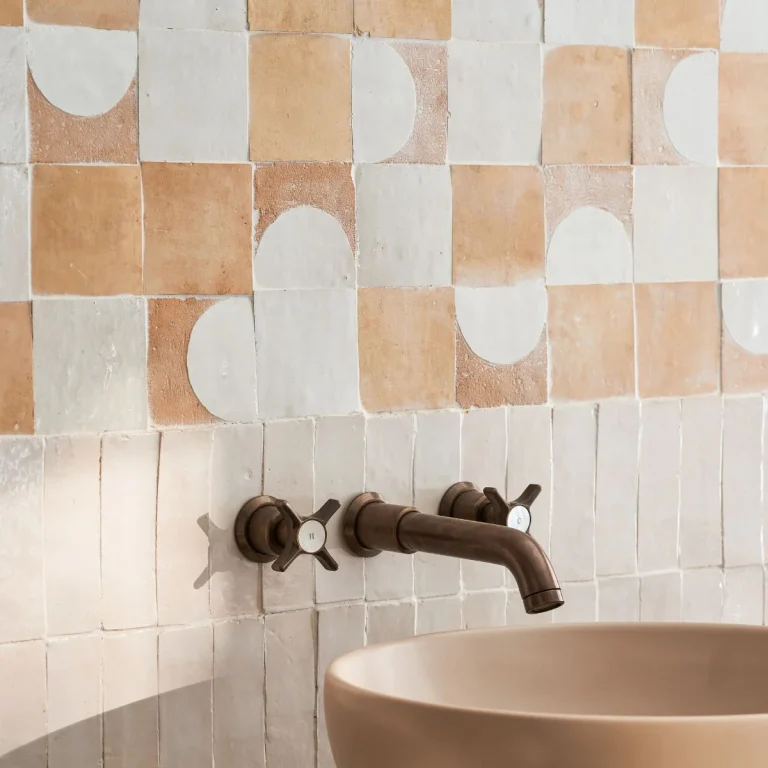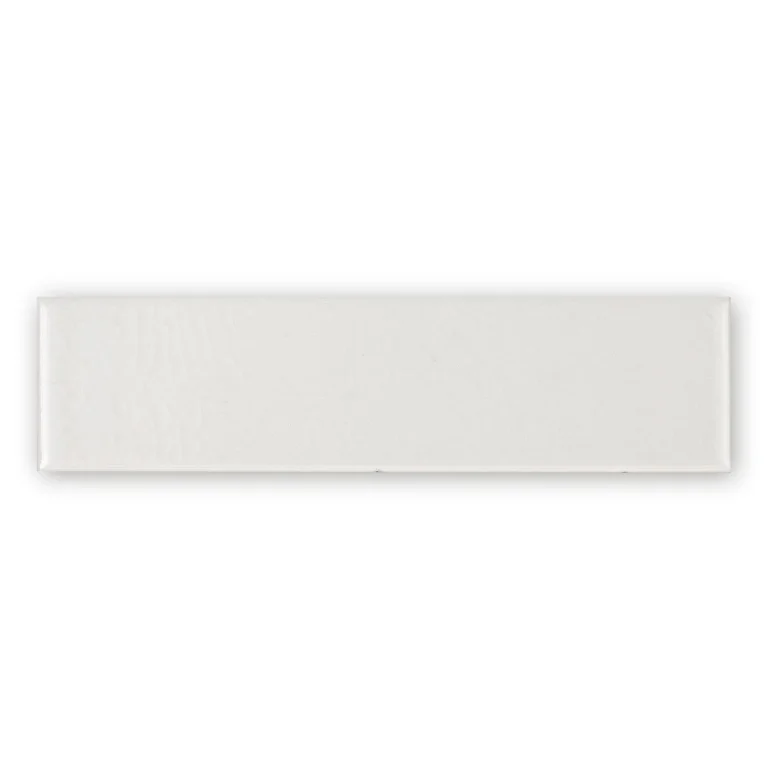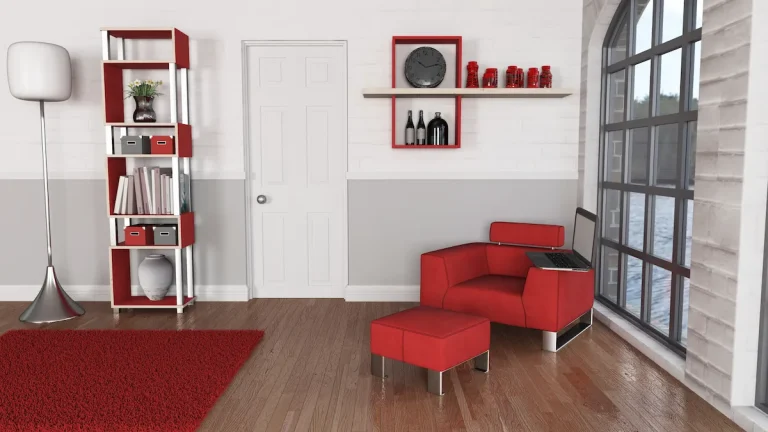Selecting the appropriate floor tiles for the living room is a critical decision that influences both the aesthetic appeal and functionality of the space. With numerous options available, including ceramic and natural stone, it is imperative to understand key factors such as durability, style, maintenance, and comfort to make an informed choice.
This guide outlines the considerations for selecting tiles, the various types available, installation recommendations, and the benefits they can offer to your home. Explore this comprehensive resource to identify the ideal flooring solution for your living area.
What to Consider When Choosing Floor Tiles for the Living Room?
When selecting the appropriate floor tiles for a sitting room, it is essential to consider several critical factors to achieve both functionality and aesthetic appeal. The sitting room often serves as the focal point of a home, functioning as a space for relaxation and social gatherings; thus, the choice of floor tiles can significantly impact the overall ambience.
Key considerations include durability, style, maintenance, comfort, and safety. This is particularly pertinent when selecting materials such as porcelain tiles, which provide a seamless appearance and are available in a variety of designs, including marble effect and cement effect.
a. Durability
Durability is a critical consideration when selecting floor tiles for the sitting room, particularly given that this area experiences significant foot traffic and regular wear and tear.
Selecting the appropriate flooring material can have a substantial impact on the overall maintenance and longevity of the space. Among the various options available, porcelain tiles are particularly notable for their exceptional durability. These tiles are resistant to scratches and stains and possess low porosity, making them an excellent choice for families and busy households.
- Porcelain Tiles: Renowned for their strength and capacity to endure heavy foot traffic.
- Ceramic Tiles: More cost-effective yet still provide reasonable durability, although they may be more prone to cracking.
- Natural Stone Tiles: Aesthetically pleasing and unique, but they require more maintenance to mitigate stains and scratches.
Ultimately, it is vital to evaluate how each type of tile will perform under daily use to ensure a sound and lasting investment.
b. Style and Design
The style and design of floor tiles significantly impact the overall aesthetic of the living room, providing an opportunity to express personal taste and complement existing décor.
When evaluating the aesthetics of a living room, the selection of tiles plays a crucial role, as it can either unify the space or serve as a striking focal point. Various design styles, such as Scandi style, offer a minimalist charm characterised by light colours and natural materials, contributing to a fresh and airy ambience.
In contrast, marble effect tiles introduce an element of luxury and sophistication, enhancing the elegance of the space. Among specific tile options, Agora Blue and Adonis Matt stand out due to their rich hues and subtle textured finishes, which enhance depth.
The choice between these styles can contribute to a harmonious atmosphere that reflects individual preferences.
c. Maintenance and Cleaning
Maintenance and cleanliness are crucial factors to consider when selecting floor tiles for the living room, as the appropriate materials can facilitate upkeep and enhance durability.
In active households, the selection of floor tiles significantly influences daily routines, necessitating a balance between visual appeal and practicality. Choosing tiles that are easy to clean ensures that busy families can maintain an orderly environment without exerting excessive effort.
For ceramic and porcelain tiles, routine sweeping and occasional mopping with a mild detergent are generally sufficient for upkeep. In contrast, natural stone tiles, while visually impressive, require specific cleaning agents to prevent damage.
Additionally, the colour of the grout is an important maintenance consideration; lighter shades may reveal dirt more readily, whereas darker grout can effectively conceal stains.
Another essential aspect to evaluate is the inclusion of anti-slip flooring. This feature not only prioritises safety for all household members but can also be easier to clean compared to slippery surfaces, making it particularly suitable for high-traffic areas such as kitchens and bathrooms.
d. Comfort and Safety
Comfort and safety should be paramount considerations when selecting floor tiles for the living room, as these factors significantly influence the functionality of the space, particularly for families with children or elderly individuals.
In this context, the incorporation of anti-slip features in various tile options can greatly enhance the overall safety of the environment. Opting for tiles with specialised textures ensures that individuals can navigate the area without the risk of slipping, which is especially crucial in households with young children or older adults who may require additional support.
Plus safety, the comfort of different tile materials can substantially affect the ambience of the room:
- Ceramic Tiles: Renowned for their cool touch, they can assist in maintaining a comfortable temperature during warmer months.
- Porcelain Tiles: These tiles offer a more solid feel underfoot, thereby enhancing stability.
- Natural Stone: While aesthetically pleasing, materials such as marble can feel cold in the winter, providing a contrasting experience.
A thorough understanding of how these material properties influence both the safety and comfort of a living space is essential for making informed decisions.
Types of Floor Tiles for the Living Room
In selecting floor tiles for the sitting room, there are several distinct types available, each presenting unique characteristics and advantages designed to cater to a variety of preferences and lifestyles.
1. Ceramic Tiles
Ceramic tiles are a widely preferred option for living room flooring, owing to their versatility, durability, and extensive range of design possibilities.
Plus these noteworthy attributes, ceramic tiles represent a practical choice for homeowners who desire a stylish yet functional flooring solution. With a vast array of patterns, colours, and finishes available, it is straightforward to select an option that complements any design aesthetic, whether contemporary or rustic.
The affordability of ceramic tiles further enhances their appeal, making them an accessible choice for various budgets and providing a favourable alternative to more expensive materials. They are suitable for a multitude of living room styles and offer several advantages, including:
- Easy maintenance and cleaning
- Resistance to stains and moisture
- A cooler surface underfoot, which is particularly beneficial in warmer climates
- Opportunities for customisation through various layout and design choices
By incorporating ceramic tiles into their living spaces, individuals can enjoy not only aesthetic appeal but also sustainability and long-lasting functionality.
2. Porcelain Tiles
Porcelain tiles are recognised as one of the most durable flooring options for living rooms, making them an excellent choice for high-traffic areas due to their remarkable strength and longevity. These tiles are specifically engineered to endure the wear and tear of daily use, ensuring that they retain their pristine appearance over the years. Their low porosity not only provides resistance to moisture but also enhances their ability to resist staining, offering homeowners significant peace of mind regarding maintenance.
Porcelain tiles can be designed to mimic other luxurious materials, such as:
- Marble: This option provides the elegance of natural stone without the associated maintenance challenges.
- Wood: These tiles feature realistic textures and patterns that impart warmth to any space.
These characteristics allow for versatility in design while ensuring resilience against both moisture and heavy foot traffic, making porcelain tiles an ideal choice for individuals seeking a harmonious blend of aesthetics and practicality in their living environments.
3. Natural Stone Tiles
Natural stone tiles are highly regarded for their distinctive aesthetics, imparting an organic and luxurious ambience to living spaces.
The selection available is extensive, encompassing classic marbles with their elegant veining, as well as that provide rich textures and colours reminiscent of natural landscapes. When considering these tiles, one must acknowledge the significant impact of their unique patterns, which can serve as engaging conversation starters.
Potential buyers should also take maintenance into account; certain stones, such as limestone and travertine, may necessitate sealing to maintain their beauty and prevent staining, while others, like granite, offer superior durability and require minimal upkeep.
In the pursuit of the ideal option, homeowners should evaluate both the visual appeal and intended application, ensuring that their selection enhances the aesthetic and functionality of their space.
4. Vinyl Tiles
Vinyl tiles represent an economical and versatile flooring solution for living rooms, available in a diverse array of styles, colours, and textures.
These tiles not only provide a budget-friendly option but also offer significant design flexibility, enabling homeowners to create unique aesthetics, such as Scandi style or a soft look, that reflect their personal tastes. The straightforward installation process, often utilising tile samples from the Crash range, allows individuals, even those with limited DIY experience, to enhance their spaces effectively without the necessity of professional assistance.
Plus their visual appeal, vinyl tiles, such as the Adonis Matt and Alpha Matt, are engineered for low maintenance, requiring only regular sweeping and occasional mopping to maintain their pristine appearance. However, it is important to consider the benefits alongside potential drawbacks.
One potential disadvantage is their vulnerability to scratching, especially in high-traffic areas. Additionally, while they can convincingly mimic the appearance of hardwood or stone, some individuals may find they lack the authentic texture of these natural materials.
Ultimately, the appropriateness of vinyl tiles is contingent upon individual needs and preferences.
5. Laminate Tiles
Laminate tiles present a cost-effective alternative to natural materials, enabling homeowners to achieve the appearance of wood or stone without incurring the associated expenses.
Their popularity has increased significantly among individuals seeking to enhance their living spaces while adhering to a budget-conscious strategy. The benefits of laminate tiles extend beyond mere aesthetics; they are exceptionally durable, making them suitable for high-traffic areas typically found in living rooms.
- The installation process is straightforward and can often be undertaken by DIY enthusiasts, thereby reducing labour costs.
- Laminate tiles are available in a wide array of styles and finishes, allowing them to seamlessly complement any interior décor.
- Many laminate options are designed to resist scratches and stains, ensuring that the flooring’s aesthetic appeal remains intact over time.
As a result, homeowners can enjoy a visually appealing and practical flooring solution that effectively meets their lifestyle requirements.
How to Choose the Right Size and Shape for Floor Tiles in the Living Room
Selecting the appropriate size and shape of floor tiles for the sitting room is essential, as it can significantly influence the perception of space and the overall design aesthetics.
1. Consider the Size of the Room
The dimensions of the living room are a crucial factor in determining the appropriate size of floor tiles, as larger tiles can create an illusion of greater spaciousness in smaller rooms.
When selecting tiles, it is important to consider how the chosen dimensions impact the overall aesthetics and perception of space. For example, smaller tiles may result in a more congested appearance, while larger tiles typically extend the visual field, making them particularly suitable for compact areas. To achieve a cohesive appearance, it is advisable to assess the scale of the room in conjunction with the style and layout.
- For narrow rooms, elongated tiles are recommended.
- In larger spaces, the use of larger square or rectangular tiles can be highly effective.
- Additionally, ensuring that the tile colour and style complement the furniture can further enhance the visual impact of tile size.
Ultimately, selecting the appropriate tile size not only enhances the overall design of the room but can also significantly influence the perception of space.
2. Think About the Furniture Placement and Stock Items
Furniture placement should be carefully considered when selecting floor tiles for the living room to achieve a harmonious and functional layout, especially when choosing stock items like large format tiles.
The choice of tile sizes and shapes can significantly influence furniture arrangement and spatial utilisation. For example, larger tiles may create the illusion of a more expansive area, resulting in an open and airy feel within the room. Conversely, smaller mosaic tiles can introduce intricate designs that enhance character but necessitate more meticulous furniture arrangement to prevent visual clutter.
- Rectangular tiles can complement long sofas by guiding the eye in a horizontal direction.
- Square tiles typically pair well with sectional furniture, providing a balanced appearance.
Ultimately, the selection of tiles should reflect not only individual style preferences but also the intended functionality of the space, facilitating seamless movement and fostering an inviting atmosphere.
3. Choose the Right Grout Size
Selecting the appropriate grout size and grout colour is crucial for achieving a polished and cohesive appearance in the floor tiles of the living room.
The dimensions of the grout lines can significantly affect not only the aesthetic appeal of the tiled surfaces but also their overall maintenance. Wider grout lines may impart a more rustic appearance and enhance the visual appeal of textured tiles, while narrower options typically provide a sleek and modern aesthetic, particularly suitable for contemporary designs. It is essential to note that larger grout joints may attract dirt more readily and necessitate additional maintenance efforts.
To choose the ideal grout, one should consider how it complements the colour and texture of the tiles:
- Select a shade that harmonises with the tile.
- Opt for lighter colours to minimise the visibility of the grout lines.
- Experiment with contrasting colours to create a bold design statement.
Additionally, it is important to consider the type of grout utilised; for example, epoxy grout can withstand moisture in high-traffic areas, thereby ensuring durability and ease of cleaning.
The Benefits of Using Floor Tiles in the Living Room
Using floor tiles in the living room provides numerous advantages, encompassing both aesthetic appeal and practical benefits, including ease of maintenance and increased durability.
1. Durability and Longevity
One of the notable advantages of utilising floor tiles in the living room is their exceptional durability and longevity, rendering them a prudent investment for homeowners who prioritise both aesthetic appeal and practicality in their flooring selections.
Among the various options available, porcelain tiles stand out as a premier choice due to their dense composition, which renders them highly resistant to scratches, chipping, and staining. This inherent toughness allows them to endure the wear and tear associated with daily activities, ensuring they retain their beauty for many years.
In a similar vein, natural stone tiles, such as granite and marble, offer a unique and timeless elegance while providing robust resistance to heat and moisture. Although they may necessitate routine sealing to maintain their lustre, their lifespan often exceeds that of many synthetic alternatives. The ability of these materials to resist fading and damage further enhances their appeal to environmentally conscious consumers who prioritise sustainability in home design.
- Porcelain tiles are impervious to water, making them particularly suitable for moisture-rich environments.
- Natural stone tiles offer unparalleled aesthetic variety through their unique patterns and textures.
- Both options require less maintenance compared to other flooring alternatives.
b. Easy Maintenance and Cleaning
Floor tiles are recognised for their ease of maintenance and cleaning, enabling homeowners to maintain the appearance of their living spaces with minimal effort.
Effective maintenance of floor tiles enhances their aesthetic appeal and extends their lifespan. Regular cleaning routines should encompass sweeping or vacuuming to remove dust and debris, followed by mopping with a gentle, pH-balanced cleaner that respects the integrity of the tile surface.
The choice of grout colour can significantly impact maintenance requirements, as lighter shades are more susceptible to visible stains compared to darker tones. Selecting anti-slip tiles is particularly advantageous in high-traffic areas or residences with children and elderly individuals, as they contribute to enhanced safety.
To further promote the longevity and appearance of the flooring, consider the following recommendations:
- Utilise a sealant on grout lines to prevent staining.
- Conduct deep cleaning every few months for optimal results.
- Regularly inspect for cracks or damage to promptly address any issues.
By incorporating these practices, homeowners can ensure that their flooring remains both visually appealing and functionally safe.
c. Versatility in Design and Style
With a comprehensive array of options available, it becomes straightforward to identify the ideal floor tile that complements various aesthetics. Homeowners may select from elegant marble effect tiles, which impart a sense of sophisticated luxury. The colour palette is expansive, ranging from soft neutrals like Aneto Cream and Alpine White to vibrant hues such as Agora Blue, allowing tiles to be chosen to either harmonise seamlessly with existing décor or to serve as a distinctive feature.
The following are some popular choices:
- Marble effect: Ideal for achieving a classic luxury appearance.
- Cement effect: Suitable for minimalistic and modern environments, especially in Scandi style interiors.
- Glossy and matte finishes: These can enhance or soften light reflection, with options like Alpha Matt and Steel Grey offering diverse styles.
- Colourful patterned tiles: Excellent for introducing character and a playful element, with choices from the Crash range.
Incorporating these elements can significantly transform a living space, reflecting the homeowner’s individuality while conforming to contemporary design trends.
d. Increased Property Value
Investing in high-quality floor tiles can substantially enhance property value, making them a prudent choice for homeowners seeking to improve their living environments.
The benefits of premium flooring extend beyond aesthetics; it plays a significant role in shaping potential buyers’ perceptions during property appraisal. When evaluating a home, prospective buyers often seek indicators of quality and durability—attributes that high-end tiles readily provide.
- Durable options: Certain tiles, such as porcelain, natural stone, and Steel Grey, are capable of withstanding wear and tear, rendering them a long-term investment.
- Design versatility: These tiles are available in a variety of styles, colours, and patterns, allowing for customisation that can appeal to a diverse range of preferences, thereby enhancing buyer interest.
Whether the objective is to achieve a modern or classic appearance, quality flooring serves as a foundational element that not only elevates the design of a room but also reflects the overall integrity of the property.
How to Install Floor Tiles in the Living Room
The installation of floor tiles in the sitting room necessitates meticulous planning and execution to achieve a professional appearance while enhancing the room’s overall design and functionality.
1. Prepare the Room and Subfloor
Preparing the room and subfloor is a critical initial step in the installation of floor tiles, as it ensures a stable and even base for the tiles.
Neglecting this essential phase can result in complications such as cracked tiles or uneven surfaces, which may diminish both the aesthetic appeal and durability of the finished floor. Before proceeding, it is imperative to conduct a thorough inspection of the subfloor for any signs of damage, moisture, or irregularities. Addressing these issues involves:
- Making necessary repairs to any damaged areas,
- Ensuring that the subfloor is level and dry,
- Using appropriate materials, such as underlay, if needed.
By taking these precautions, one establishes a reliable foundation that not only enhances the performance of the tiles but also contributes to the longevity and overall success of the flooring project.
2. Lay Out the Tiles and Plan the Layout
Laying out the tiles and planning the layout is crucial for achieving a harmonious and visually appealing arrangement in the sitting room.
Before finalising any specific pattern, it is highly beneficial to perform a dry lay of the tiles on the floor. This technique allows for visualisation of the completed design, enabling necessary adjustments prior to installation. This practice not only ensures a better fit but also facilitates the exploration of various configurations that complement the space.
During the tile layout planning process, it is important to consider the main focal points in the room, such as a fireplace or entertainment centre, as well as the placement of furniture. Ensuring that the tile orientation highlights these key areas can significantly enhance the overall aesthetic.
- Begin by marking the centre of the room to establish symmetry.
- Experiment with different patterns, such as diagonal or herringbone, to identify the most visually appealing option.
- Consider potential furniture arrangements to ensure that the tiles flow seamlessly under and around the furnishings.
By taking these steps, one can create a space that feels intentional and thoughtfully designed.
3. Apply Adhesive and Lay the Tiles
Applying adhesive and properly laying tiles is essential for ensuring a secure installation that is durable over the long term.
To achieve optimal results, it is imperative to adhere to a systematic approach. Begin by selecting the appropriate type of adhesive that is compatible with the specific tile material, as this choice will significantly impact both adhesion and longevity.
Subsequently, utilise a notched trowel to evenly spread the adhesive on the substrate, creating a consistent layer while ensuring the absence of air pockets or uneven surfaces. Attention to the application technique is crucial; the grooves formed by the notched side of the trowel will facilitate an even bond.
- After applying the adhesive, carefully lay the tiles in position, pressing down to ensure adequate contact with the adhesive.
- Use spacers to maintain uniform grout lines, which are vital for both aesthetic appeal and structural integrity.
- Periodically check alignment and make adjustments as necessary to maintain a straight and visually appealing layout.
This meticulous approach not only enhances the durability of the installation but also contributes positively to its overall appearance.
Grout and Seal the Tiles
Grouting and sealing the tiles represent the final step in the installation process and are essential for achieving a polished finish while safeguarding the tiles from moisture and dirt.
This critical stage not only enhances the overall aesthetic appeal of the tiled surface but also plays a vital role in prolonging the lifespan of the installation. Selecting the appropriate grout colour can significantly influence the appearance of the tiles, either allowing them to stand out or enabling them to blend seamlessly with the surrounding décor. Proper application of sealing techniques is essential for preventing staining, mould, and damage over time, thereby ensuring that the investment in tilework remains protected.
It is imperative to exercise careful attention to detail during this phase. The following guidelines are recommended to ensure a neat application and long-lasting results:
- Select a grout colour that complements the tiles.
- Use a high-quality sealant specifically designed for the type of tile being installed.
- Ensure that the surface is clean and dry prior to application.
- Utilise proper tools, such as a grout float, to achieve a smooth application.
- Adhere to the manufacturer’s instructions regarding curing times.
By following these guidelines, one can attain a professional finish that not only enhances visual appeal but also delivers lasting protection.
At TEKA Flooring, we offer a diverse selection of top-quality tiles that will elevate your space. Our tiles are designed for easy maintenance and long-lasting beauty, ensuring your living room stays looking great for years to come. And with our expert fitting services, we ensure a smooth, professional installation.
Explore TEKA Flooring today to find the perfect floor tiles for your living room and make your space as stylish as it is functional.
Read also:

































